Article
Should American Tourists Make Their Own Exit From Europe? Part 3
Author(s):
Let us continue in Part 3 with a look at those countries in Europe closest to the borders of France, countries very popular with tourists.
Let us continue in Part 3 with a look at those countries in Europe closest to the borders of France, countries very popular with tourists.
- Related: European Adventures Part 1 & Part 2
Switzerland
Switzerland may be known for its delicious chocolates and beautiful landscapes, but it is also very clean and efficient. “As well run as a Swiss watch” may be a cliché but actor Peter Ustinov used it in 1987 to describe Toronto as “New York City run by the Swiss” and what he meant was immediately recognized by those who heard him.
The Swiss households apparently possess more weapons than even the typical NRA American home for some reason, which is said by the Swiss to be why it had never been invaded by Germany. War historians claim it is because its many valleys and lakes would make the movement of armies impossible. Certainly that's the reason Switzerland got into its export business with tiny valuable items like watches and hearing aids; they are not big on manufacturing huge boxes of Depends-like paper products to send out as Amazon does for the world.
In the immediate post war II years, Brits would visit Switzerland without a wristwatch, hoping Customs would not realize the flashy watch now on show as they returned to England was new — a forlorn hope as in those innocent days the UK Customs saw their enemy as the “common man, the simple tourist.”

Yet the joys of Switzerland remain as the innocent delights they have always been: travel, often by rail, across pleasant countryside that usher travelers into clean cities poised on sparkling lakes.
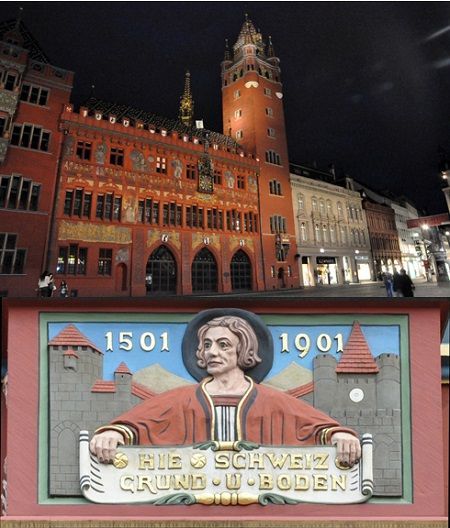
Then there are cities on the Rhine like Basel with its more than five centuries of history where a guide tells us the people in the city can swim in the Rhine! We are impassive and think “Duh!” It's a river, why would they not? It turns out the Rhine has been so polluted for years by commercial interests that it's only recently that Basel has been able to address that issue successfully.
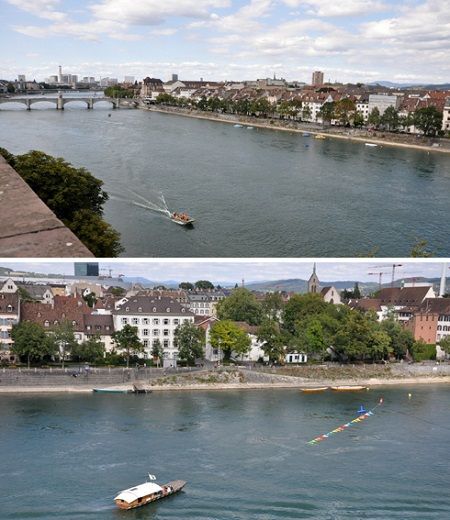
The river does look clean. Apparently at the weekend young urban Swiss often wear swim suits instead of underwear because they have something to prove: Their river is clean!

Then there's Swiss culture and legends like Chillon Castle and the charm (a word that really is overused in travel writing) of the Swiss villages you will pass through in any search for the legendary, in fact fictitious, William Tell.
Luxemburg
If American schoolkids don't know much about Switzerland, they know less about Luxemburg. Some see it as a small country a bit like the Vatican or Monaco — or Andorra, that little place between Spain and France. But Luxemburg is not that small; it now has a population of over half a million but, in the previous World War I, 2,000 of its citizens died fighting in the French army against Germany, 1% of its then population.

It's a war and a battle that brings visitors to Luxembourg (sometimes spelled Luxemburg). The Battle of the Bulge, the largest battle the US Army ever fought in history, began in December 1944 and killed or wounded more than 80,000 American military personnel before it ended. The cemetery here is beautifully maintained; it is the reason most American visitors come but those small counties in Europe are very insular and the website created for Ten Reasons to Visit Luxemburg does not mention the US Cemetery! This insularity, this self-complacency, is often seen in places that gained the most in the EU from being made important components of the European Union — and strangely it's the individual citizens of those counties who often are most vocal because they have not personally been made officers of this new empire, the EU.
Belgium
We've had fun in Brussels. Its small statue Manneken Pis makes its statement: Life is a laugh. Brussels doesn't take itself seriously or didn't until the age of terrorism showed how weak its intelligence-gathering forces are with its “gigantic bureaucracy.” Atlantic magazine quotes an Israeli source who attributes the inefficiency of Belgium fighting terrorism with “Belgians' love of eating chocolate and enjoying life and looking like great democrats and liberals.”

The most beautiful square in Brussels, the Place du Grand Sablon, pays tribute to the merchants in the city who, as in the Netherlands, were able to build wealth under the very eyes of the aristocracy and the church that could have prevented all that — had they noticed. The square is worth a look even at night; there are great restaurants. Even the dogs cooling off in the fountains seem to be enjoying themselves.
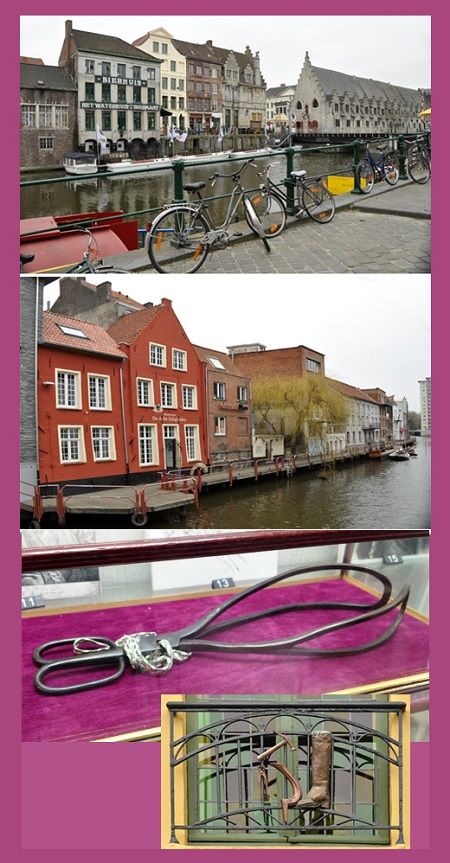
Brussels has a busy population of about 1.1 million. The languages in bilingual Belgium are French (80% of the population) or Dutch. Ghent, in the Flemish part of NW Belgium where its form of Dutch is spoken has much to interest travelers including the row of guildhalls, the Graslei, beside the Leie river harbor. Ghent may be a quieter visit than Brussels; its population is a mere one-quarter of a million. We found Ghent more interesting than Brussels or Bruges
— t
here is so much to see. For example, the medical museum in Het Pand has an original Chamberlen obstetrical forceps on a purple velvet pad. It’s one of the great stories in the history of medicine: how the Huguenot refugee Chamberlen family invented obstetrical forceps and kept it a secret for 125 years through four generations; the oldest Peter (1560-1631) generally credited with the invention that surely gave the Chamberlens the edge in OB. The (inserted) street sign illustrates a cobbler's place of work.
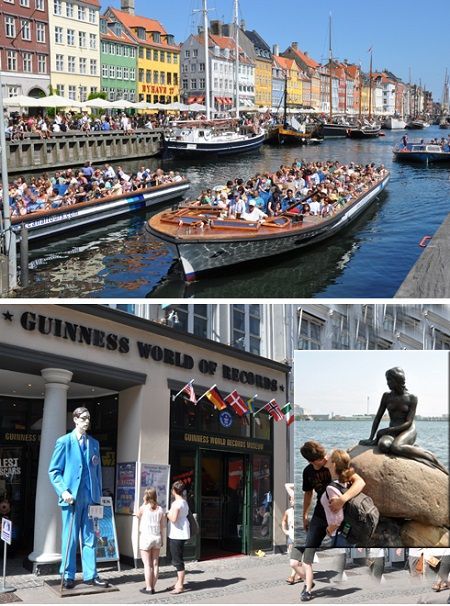
I should hold any discussion on Denmark until we get up into Scandinavia because that's its turf, but a quick comment here will allow us to get to a much more interesting part of Europe: the Netherlands. To be fair, Copenhagen is gorgeous; it is colorful and full of enthusiastic visitors. It has a brave history in World War II; its statues from the Little Mermaid to ones depicting its resistance to Nazi Germany remind us of its courage and its prosperity from the times of the Vikings. The Guinness World of Records reminds us, too, that the Danes are the tallest in Europe, taller even than the Norwegians. But the cafés and shops in the Copenhagen that tourists come to are merciless in how they charge or over-charge anyone making the mistake of ordering a cup of coffee or some other trivial purchase. They clearly don't care if the customer never comes back; they are out to gouge the tourist. I was puzzled by this attitude in Copenhagen until I found Rick Steves' Guidebook Scandinavia that explained, on page 52 of the 2010 book, the city: “offers no real tourist information office. An advertising bureau called Wonderful Copenhagen bills itself as the TI, but is actually a blatantly for-profit company — providing information only about businesses that pay a hefty display fee (thousands of dollars a year).”
This is not an avaricious behavior found exclusively in Copenhagen but it's so in your face, we have never come back. So dismissing Copenhagen thus gives me more space to talk about a great city in the Netherlands that truly gives value for money: Amsterdam.
The Netherlands
Amsterdam is a pleasure. It has an efficient airport linked to a rail system that has you sitting in a train for the central part of town in just a few minutes. And when you depart your train, you find you are right where all the city public transportation (that includes canal cruises) converges and within walking distance of several hotels including our favorite IBIS hotel and several of Amsterdams's great museums. English is understood by many Dutch (“We could never get foreigners to learn our ugly language,” a guide once told me, “so we learned yours!”).

Amsterdam is as much the home of Dutch art as any Dutch city. Its museums exploit that. Van Gogh is well demonstrated in several museums but the Van Gogh Museum has now re-opened in its own updated location. Whether it will allow visitors to wield cameras is not always clear. Yet it's all here, from the early works to those before he died much from this artist so tortured by his demons.

There's a more solemn gravitas at the Rijksmuseum because this is where some of the nation's most beloved examples of Dutch Art hang. The upgraded museum alone would justify a visit to this city.
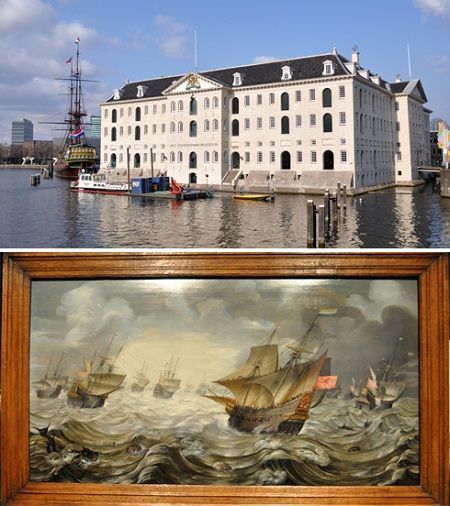
The surprise to me was the magnificent National Maritime Museum with its paintings of ships in full sail in battle recalling the great era of the Dutch East India Company and how it fought for its trade against any greedy intrepid nations who opposed them.
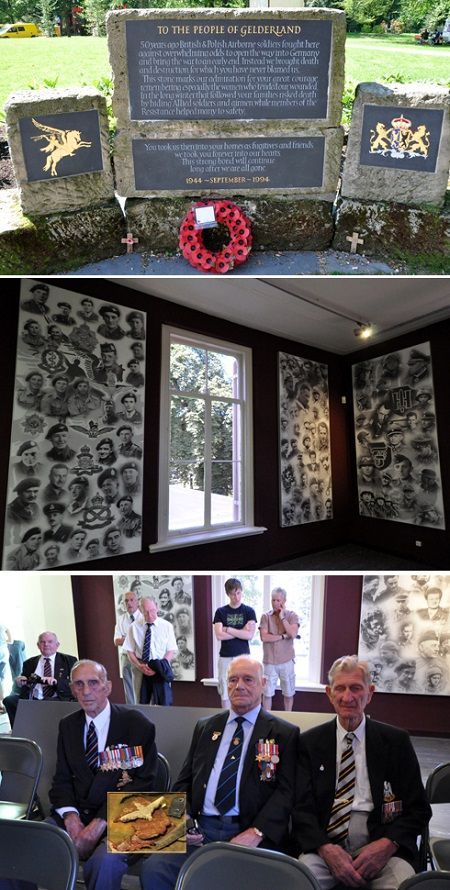
A museum that covers the great battle of Arnhem can be found a short distance by train from Amsterdam. It's a tragic story; it was more than a battle, it was a defeat for the Allied forces. Everything went wrong and its hope that it would have the Allied forces home by Christmas — with the war over – was never realized. The destruction of Dutch villages and the loss of civilian lives could have changed relations between the British and the Polish airborne forces for ever but the Dutch had already suffered under German occupation and knew war is war. The bridge in Arnhem that was the target of the one of the Allied forces was the responsibility of the 2nd Battalion Parachute Regiment under Col John Frost. He was to hold the bridge until reinforcements came. They never did. Frost fought with a broken leg until only 17 out of 900 men in the battalion came back. The bridge bears, proudly and sadly, the name of John Frost Bridge.
The Andersons, who live in San Diego, are the resident travel & cruise columnists for Physician's Money Digest. Nancy is a former nursing educator, Eric a retired MD. The one-time president of the NH Academy of Family Physicians, Eric is the only physician in the Society of American Travel Writers. He has also written five books, the last called




